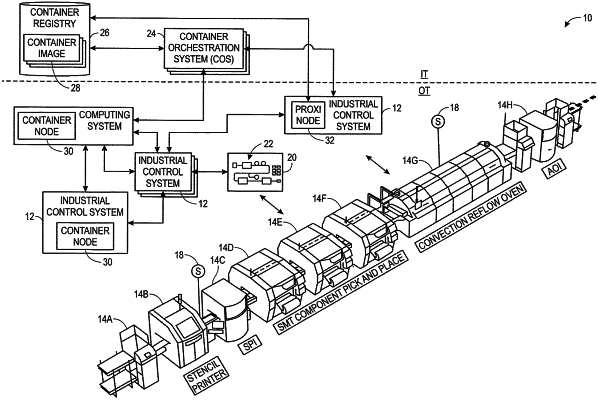| CPC G06F 9/5077 (2013.01) [G06F 9/4856 (2013.01); G06F 9/5072 (2013.01); G06F 9/542 (2013.01)] | 20 Claims |

|
1. A system, comprising:
a first computing node of a plurality of computing nodes that are part of a container orchestration system for coordinating a plurality of operations of a plurality of operational technology (OT) devices, wherein the first computing node comprises at least one processor configured to perform operations comprising:
receiving an event-based notification from a second computing node of the plurality of computing nodes, wherein the second computing node comprises one or more first processors and is associated with a first OT device of the plurality of OT devices;
determining one or more analytic operations to be performed based on the event-based notification;
determining one or more pre-analytic operations to be performed based on the one or more analytic operations;
receiving a plurality of operational datasets from each of at least a portion of the plurality of computing nodes, wherein each of the plurality of operational datasets correspond to an operational state associated with each of at least a portion of the plurality of OT devices;
identifying a third computing node of the plurality of computing nodes as a suitable host to perform the one or more pre-analytic operations based on the plurality of operational datasets; and
transmit a pod to the third computing node, wherein the pod is configured to cause one or more second processors of the third computing node to perform the one or more pre-analytic operations.
|